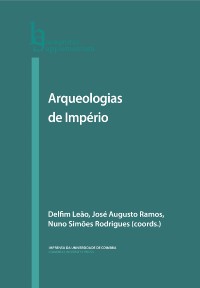Please use this identifier to cite or link to this item:
https://hdl.handle.net/10316.2/45217| DC Field | Value | Language |
|---|---|---|
| dc.contributor.author | Monte, Marcel L. Paiva do | |
| dc.date.accessioned | 2019-01-27T22:51:47Z | |
| dc.date.accessioned | 2020-09-04T21:06:48Z | - |
| dc.date.available | 2019-01-27T22:51:47Z | |
| dc.date.available | 2020-09-04T21:06:48Z | - |
| dc.date.issued | 2018 | - |
| dc.identifier.isbn | 978-989-26-1625-4 | |
| dc.identifier.isbn | 978-989-26-1626-1 (PDF) | |
| dc.identifier.issn | 2182‑8814 | |
| dc.identifier.uri | https://hdl.handle.net/10316.2/45217 | - |
| dc.description.abstract | In military or venatory contexts of violence, decapitation is a startling atrocity with a mostly symbolic and semiotic purpose. An act of propaganda, element of rituals or sign of triumph, the appropriation of an enemy’s severed head – a crucial visible component identity and self – acts as a powerful synecdoche that manifests its physical defeat and the ruin of everything he stands for to the victor. In this work are presented a few reflections concerning the role of the caput hostis as discoursive instrument of political power in Assyria during the 1st millennium BCE, establishing some of the different meanings produced by several modes of textual and visual expressions. | eng |
| dc.description.abstract | Em contextos de violência, militar ou venatória, a decapitação é um ato de inusitada atrocidade cujo propósito é sobretudo simbólico e semiótico. Ato de propaganda, elemento de rituais ou signo de triunfo, a apropriação da cabeça de um inimigo – componente visível fundamental da identidade e do ser – é uma sinédoque poderosa que manifesta a sua derrota e a ruína de tudo o que representa para o vitorioso. Neste trabalho, são expostas reflexões sobre o papel da caput hostis como instrumento discursivo do poder político na Assíria do I milénio a.C., estabelecendo diferentes significados produzidos pelas suas modalidades de expressão visual e textual. | por |
| dc.language.iso | por | - |
| dc.publisher | Imprensa da Universidade de Coimbra | por |
| dc.relation.ispartof | http://hdl.handle.net/10316.2/45208 | por |
| dc.rights | open access | - |
| dc.subject | Decapitation | eng |
| dc.subject | Warfare | eng |
| dc.subject | Assyria | eng |
| dc.subject | Ashurbanipal | eng |
| dc.subject | Teumman | eng |
| dc.subject | Decapitação | por |
| dc.subject | Guerra | por |
| dc.subject | Assíria | por |
| dc.subject | Assurbanípal | por |
| dc.subject | Teumman | por |
| dc.title | Decapitação e exibição do inimigo como discurso e exercício de poder no império neoassírio | por |
| dc.title.alternative | Decapitation and exhibition of the enemy as discourse and exercise of power in the Neo-Assyrian empire | eng |
| dc.type | bookPart | por |
| uc.publication.firstPage | 155 | - |
| uc.publication.lastPage | 177 | - |
| uc.publication.location | Coimbra | por |
| dc.identifier.doi | 10.14195/978-989-26-1626-1_8 | - |
| uc.publication.digCollection | PB | por |
| uc.publication.orderno | 9 | - |
| uc.publication.area | Artes e Humanidades | por |
| uc.publication.bookTitle | Arqueologias de Império | - |
| uc.publication.manifest | https://dl.uc.pt/json/iiif/10316.2/45217/200433/manifest?manifest=/json/iiif/10316.2/45217/200433/manifest | - |
| uc.publication.thumbnail | https://dl.uc.pt/retrieve/11008136 | - |
| uc.publication.parentItemId | 55088 | - |
| uc.itemId | 68092 | - |
| item.grantfulltext | open | - |
| item.fulltext | With Fulltext | - |
| Appears in Collections: | Arqueologias de Império | |
Files in This Item:
| File | Description | Size | Format | |
|---|---|---|---|---|
| decapitacao_e_exibicao_do_inimigo_como_discurso_e_exercicio_de_poder_no_imperio_neoassirio.pdf | 4.36 MB | Adobe PDF |  |
Items in DSpace are protected by copyright, with all rights reserved, unless otherwise indicated.
